The American curl is best known for the ears that give the breed their name. But along with this adorably unique feature, these are friendly, sweet family pets.
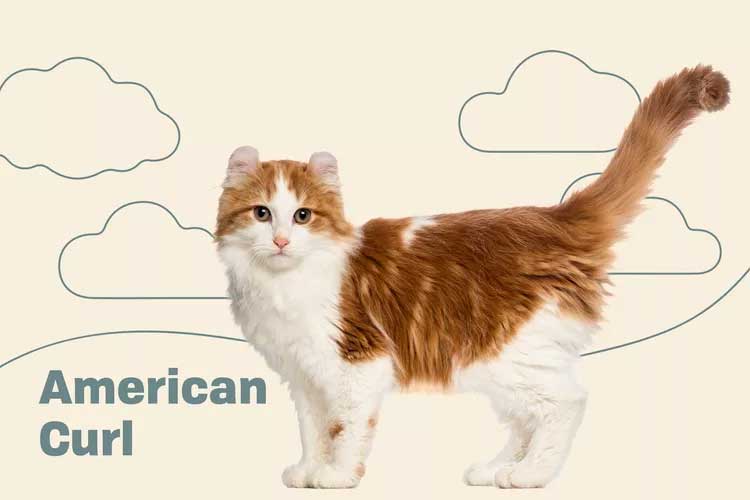
American Curl Overview
| OFFICIAL NAME | American Curl |
| COMMON NAME | American Curl |
| PET HEIGHT | 9 to 12 inches |
| PET WEIGHT | 5 to 10 pounds |
| LIFESPAN | 12 to 16 years |
| GOOD WITH | cats, children, families, seniors |
| TEMPERAMENT | affectionate, sociable |
| INTELLIGENCE | medium |
| SHEDDING AMOUNT | normal |
| PLAYFULNESS | high |
| ENERGY LEVEL | active |
| VOCAL LEVEL | infrequent |
| COAT LENGTH | long, short |
| COLORS | black / ebony, blue / gray, chocolate / brown / sable, cinnamon, cream / beige / tan, fawn, lavender / silver, lilac, red / orange, white |
| OTHER TRAITS | easy to groom, friendly toward humans, friendly toward other pets, friendly toward strangers, good for first-time pet owners, good lap cat |
Proving that Bob Ross was right and there are such things as "happy mistakes," the American curl is the result of a spontaneous, naturally occurring genetic mutation. Looking like any number of domestic cats, the feature that sets the breed apart is their ears, which curl towards the back of their heads. Underneath those unique ears is a cat who is friendly, engaging, and incredibly sweet. Staying youthful well into adulthood, American curls are sometimes called the "Peter Pan of the cat fancy."
Appearance
The American curl breed originated because of the namesake bend in their ears. This backward curl gives the ears the appearance of being inside out (which, technically speaking, they are). The amount of curl will vary from kitten to kitten, and there's no discernible way to tell what kind of kittens a particular adult will have; the ears can range from almost straight up to a curl of nearly 180 degrees.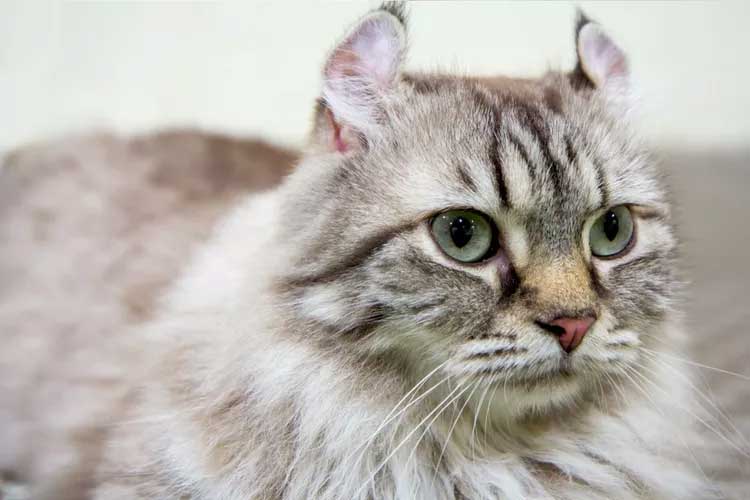
American curl kittens are born with straight ears, according to the Cat Fanciers' Association. But when they're around four days old, their ears will bend backward, curling and uncurling to varying degrees over the next four months or so before setting in a final position. Once the ears do set, the bottom two-thirds are made of hard cartilage (similar to our ears) rather than the softer flesh of most cat breeds. The top third remains soft and pliable, and great care needs to be taken with the American curl's ears to prevent damage to the harder cartilage.
The American curl comes in a truly stunning array of colors and patterns. American curls have been seen and shown in every recognized color, including rarer hues like fawn and lilac, as well as every possible marking pattern, from tortoiseshell to color point. Curl coats can come in both short and long hair varieties, with each variation lying close to the body, relatively free of an undercoat.
The American curl has a modified wedge-shaped head, an oblong body, and round eyes. The ears are turned outward ever so slightly so that if you were to draw imaginary lines back from the points of the ears they would meet at the base of the skull.
Temperament
Despite the truly dizzying array of color and coat combinations for the breed, one thing that seems to be consistent is their personalities. The American curl is a delightfully loving, youthful breed. Curls don't reach full maturity until 2–3 years of age, so the breed retains their kitten energy well into adulthood and can remain spry and active far into their teens."American curl cats tend to be intelligent and active, including at older ages," says Alison Gerken, DVM at Florida Veterinary Behavior Service. "They enjoy playing, so pet parents should expect to provide a high degree of mental stimulation and environmental enrichment to their American curl through multiple daily play, grooming, and petting sessions; cat perches and trees; and a variety of toys and food puzzles."
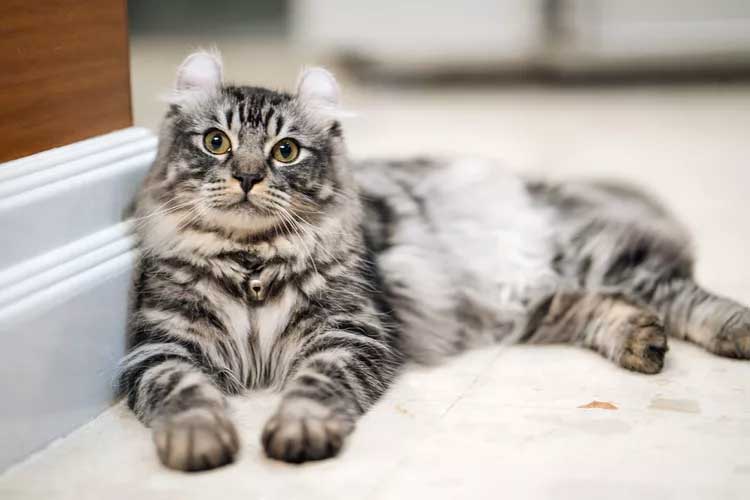
Not known as a highly vocal cat, the curl will coo and chirrup when he is hungry or when you first arrive home, but most of the time he will be happy to convey his affection through head bumps and physical attention.
They are a friendly, affable, extremely adaptable breed who welcomes the attention of children and gets along well with other cats and cat-friendly dogs, adapting to new housemates with cheerfulness. They prefer the company of their people but will do well enough on their own for longer periods of time, if necessary.
"A potential American curl pet parent can expect them to adjust to the new home and integrate with their new family smoothly," Gerken says.
Though American curls are active cats, they are definitely people-lovers and will be happy to curl up and take advantage of a good lap when one becomes available. Not particularly skittish around strangers, they are glad to serve as a welcome wagon for any visitors as well.
Living Needs
When not curling up with his humans, the American curl appreciates a quiet place to nap on his own. Curls have been known to commandeer salad bowls, boxes, and milk crates for slumbering, especially any left in a lofty position. But you should give him his own cat bed, hammock, and other comfy spaces that are just for him.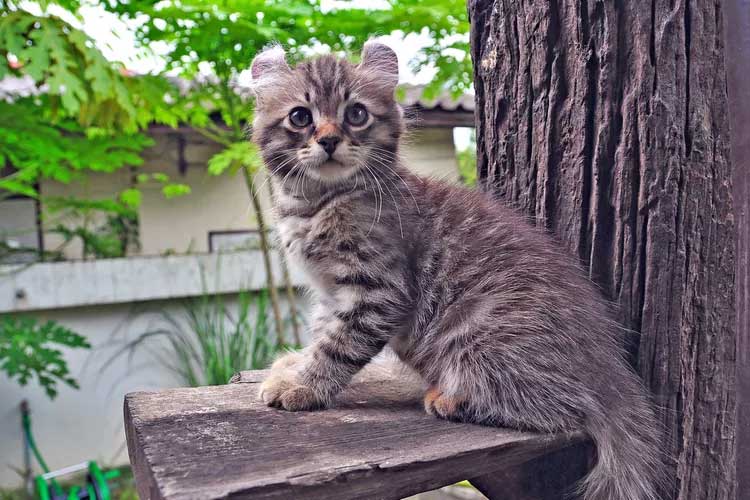
American curls are highly adaptable cats, Gerken says, and do great with seniors, first-time cat parents, and families with children. In fact, the American curl is one of the few cat breeds that seem to seek out children and enjoys play sessions with them, according to the CFA. However, Gerken says very small children should be supervised and taught how to interact with pets. Make sure they know to not play with the American curl's delicate ears!
Care
Regardless of whether your American curl is long- or short-haired, brushing him twice a week should keep you ahead of any shedding and prevent matting, Gerken says. The breed is a pretty consistent shedder year-round.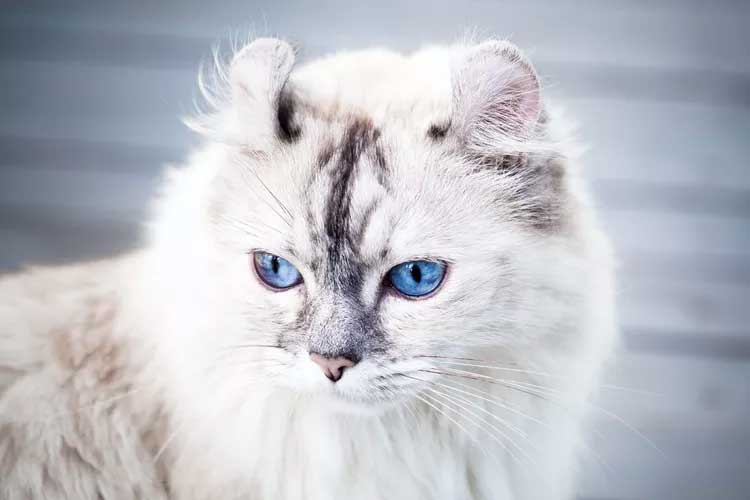
Brushing aside, special care should be taken to frequently clean the American curl's ears to prevent ear infections (his folded-back ears make it more difficult for a curl to clean on his own, Gerken says).
"An American curl's pet parent may need to monitor for debris accumulation and signs of an ear infection, including redness of the ear canal, malodor, shaking of the head, and pawing at the ears," Gerken says. And, like all cats, Gerken says American curls need their nails trimmed regularly and their teeth brushed ideally every day.
Along with their physical health, taking care of kitty's mental wellbeing is important for every pet parent.
"Because American curls are intelligent cats, pet parents are encouraged to teach them tricks," Gerken says. "Training cats is not just a fun way to show-off to visitors to the home, but is great mental stimulation for the cats too."
Health
Thanks to the huge number of non-pedigreed domestic cats that contributed to the making of the American curl, the breed is pretty solid health-wise. They are prone to ear infections, so keeping their ears clean and maintained is important. Gerken says American curl cats are also susceptible to progressive retinal atrophy, which can lead to vision loss.Otherwise, just watch out for the traditional cat maladies like osteoarthritis, heart issues, and kidney disease as they age.
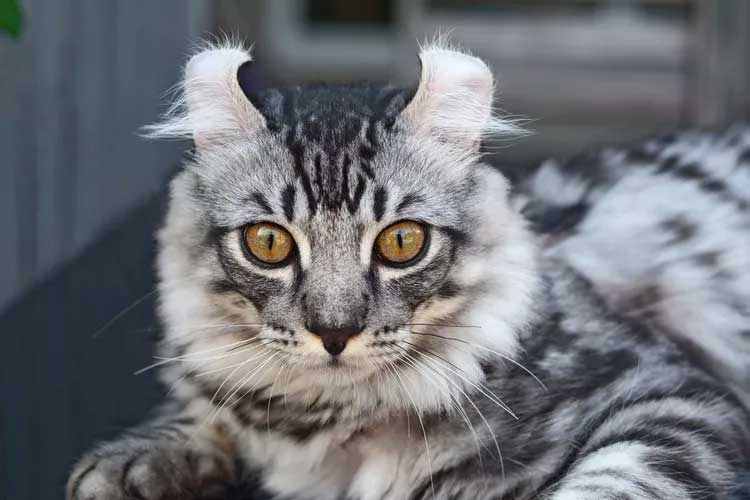
"Around midlife—maybe eight or nine years old—if your vet isn't already recommending annual blood work, I'd recommend it," says Carol Margolis, DVM, DACT of the Gold Coast Center for Veterinary Care on Long Island, N.Y. "Depending on the cat that you get, if you do something proactive like investing in pet insurance, make sure to look for any breed-dispositions that your insurance won't cover."
Taking your cat to regular veterinary appointments will keep him healthy, especially because your American curl might not let you know if something is wrong right away.
"Kidney disease is incredibly common in cats," says Michelle Beck, DVM, CCRT, CVA, of the Backlund Animal Clinic in Omaha, Neb. "That's really just across the board in cats. Also, by the age of 10, 70 percent of them have arthritis somewhere in their body. Cats are very good at hiding their pain, so being proactive with your vet is important when it comes to locating and identifying issues."
History
The American curl was first created in 1981 in Lakewood, Calif., according to the CFA. A pair of stray kittens appeared on the doorstep of Joe and Grace Ruga in June of that year, both of whom looked like typical domestic cats, with the exception of their ears, which were curled backward on their heads. The Rugas took the pair in, though one disappeared again shortly thereafter. The remaining cat—a black longhair the Rugas named Shulamith—became the basis upon which the new breed was created, and back to which every American curl today can trace their lineage.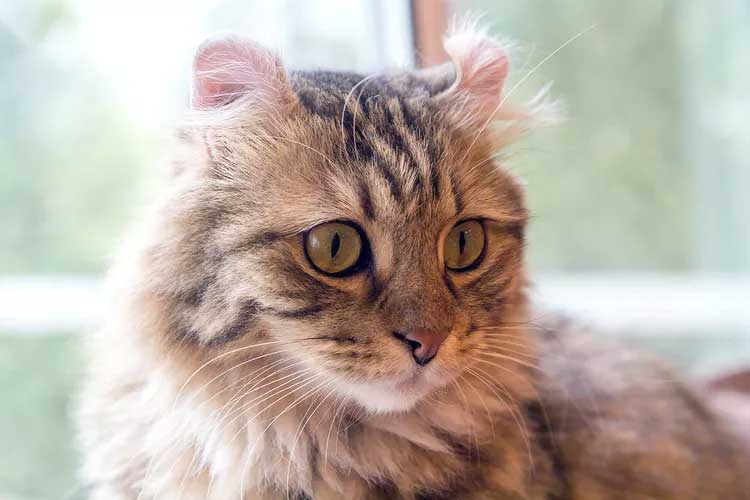
The Rugas had an array of genetic tests done on Shulamith and her kittens, all of which conclusively agreed that the bend in their ears was a spontaneous genetic mutation, which exhibited itself as a dominant gene. The testing further concluded the mutation had created no additional defects or health issues and that Shulamith and her progeny were perfectly healthy, stable cats.
From there, the breed was established with surprising rapidity. Submitted to the Cat Fanciers Association (CFA) in 1983, the breed was accepted for registration in 1986, granted provisional status in 1991, and granted Champion status in 1993.
Up until 2010, it was acceptable for American curls to be outcrossed with any non-pedigreed domestic cat, which has helped create the amazing diversity in the breed's coat and color variations. The studbooks were officially closed in 2010, so all subsequent pedigreed American curls are the result of Curl-Curl breedings.
Fun Facts
As of 2022, the American curl is the only breed recognized by the CFA in both the longhair and shorthair classes.For show cats, the ears are the most stringent criteria. Cats with ears that curl too far (more than 180 degrees) or not far enough (at least 90 degrees) are disqualified. So too are cats who don't have enough hard cartilage at the base of the ears, or ears that have too much variance in curl from one ear to the other.
Even in curl-curl breedings, it's impossible to tell how much (or how little) a litter's ears will curl. Kittens may have fairly deep curls—or ears that stand straight up—in the same litter.